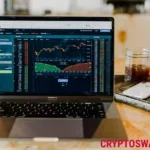Ripple CEO Brad Garlinghouse breaks down the key differences between Ripple and XRP. Learn how Ripple supports XRP’s real-world utility without controlling the asset.
The cryptocurrency sector thrives on speculation, but Ripple’s CEO, Brad Garlinghouse, remains uninterested in hype. In a recent interview clip posted by John Squire, Garlinghouse clarified one of the industry’s longstanding misunderstandings: the distinction between Ripple and XRP.
His comments come as Ripple positions itself at the forefront of next-generation banking and liquidity systems, with XRP potentially playing a key role in powering real-time financial infrastructure.
CEO Brad Garlinghouse Explains Ripple and XRP
For years, even industry insiders have confused Ripple and XRP. Garlinghouse addressed this explicitly, stating, “There is Ripple as a company, XRP as a digital asset, and the XRP Ledger.” He explained that Ripple is a Silicon Valley technology company founded in 2012 to develop payment infrastructure for financial institutions.
In contrast, XRP is an open-source digital asset that operates independently on the XRP Ledger (XRPL), a decentralized blockchain network validated by consensus rather than proof of work or proof of stake.
Garlinghouse emphasized the importance of this distinction, noting that Ripple contributes to the development of the XRP ecosystem but does not control it.
“Ripple is an important participant in the development of the XRP ecosystem, but obviously there are many others, as you would expect, who are part of an open-source community.”
He reiterated that Ripple has always prioritized real-world utility and global liquidity over price speculation. Garlinghouse emphasized that XRP’s efficiency in speed, scalability, and cost makes it ideal for cross-border payments—an area where legacy banking systems continue to struggle.
“We feel it works well for cross-border payments,” Garlinghouse said, highlighting Ripple’s mission to modernize the infrastructure that enables the movement of value.
The CEO’s views align with Ripple’s recent developments, including its application for a national bank charter in the United States, the expansion of its Liquidity Hubs, and the launch of its RLUSD stablecoin in late 2024. These are all critical steps toward integrating blockchain-based liquidity with traditional finance.







